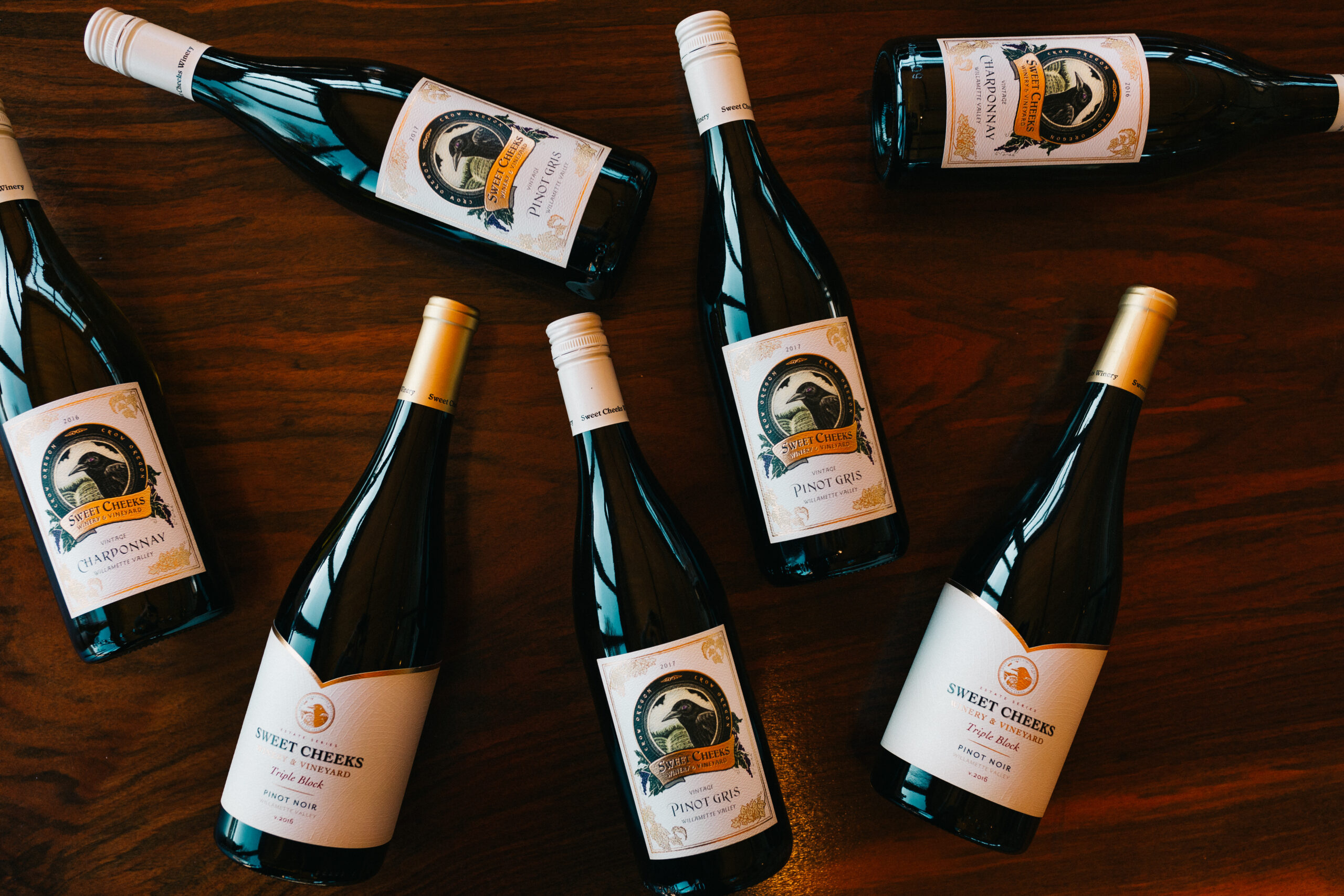
Visit us
Sweet Cheeks Winery & Vineyard
27007 Briggs Hill Rd
Eugene, OR 97405
541-349-9463Eugene, OR 97405
Tasting room hours
Open Daily
11:00am – 6:00pm
Ramblings

Our vineyard is situated on a 55-acre plot with a storied history. The picturesque spot was used for cattle grazing for over a century before it evolved into a flourishing vineyard in the heart of the Southern Willamette Valley’s wine country.

1854: The McCulloch family obtained the first recorded land grant for the property on what is now Briggs Hill Road.
1978: A small block of Pinot Noir was planted by the property’s previous owner, foreshadowing the land’s future.
1989: Inspired to start a vineyard, Dan Smith purchased the property and began his winemaking journey.
1989 – 2001: Dan planted the vineyard in stages, resulting in our 42-acre estate of four varietals:
1993 – 2003: Sweet Cheeks Vineyards produced grapes for various Willamette Valley wineries. Dan commissioned a logo featuring a crow to appear as the mascot as a nod to the local community of people in Crow, OR who fully embraced him when he relocated from California.
2004 – present: The vineyard produces is produces the grapes for our own winery’s growing list of bottlings.
Our vineyard’s soil type is primarily Willakenzie, a sedimentary soil. Willakenzie soil is composed of the marine sediment of the former seafloor that was lifted by the collision of two tectonic plates over 15,000 years ago. The soil is very deep and well-drained — encouraging a deep root system for the vines as they search for more minerals and water.
Steiwer soil is found in the southern-most point of the vineyard, where our Kody block of Pinot Noir and Chardonnay reside. This is also a sedimentary rock soil type.
The Southern Willamette Valley experiences a large temperature shift during the growing season. We can be over 80 degrees Fahrenheit in the daytime, and drop to 50 degrees at night. This temperature shift is ideal for growing Pinot Noir, Pinot Gris, Chardonnay, and Riesling in a cool-climate environment. Our valley experiences a consistent breeze, and sometimes larger wind gusts, which allows for excellent air circulation. Our vines are planted in a double guyot trellis system to take advantage of our microclimate.
The combination of our climate and soil types lends our varietals particularly rich complexity and depth.
Led by our winemaker, Leo Gabica, our vineyard team uses LIVE certified farming practices and vineyard products to maintain long-term soil, vine, and crop health. Our vineyard is maintained year-round by our small, dedicated vineyard team. We are able to practice dry farming due to our soil types and vine ages. And all our grapes are hand-picked at harvest to ensure excellent grape quality.
To support our production needs and offer a range of wine varietals outside of our vineyard plantings, we a source additional grapes from a network of trusted partner vineyards each year. The close, long-standing relationships we’ve built with these farmers allows us to offer bolder varietals like Syrah, Tempranillo, and Sauvignon Blanc, which grow best in the warmer climates of Southern Oregon’s American Viticultural Areas, and also increase the production of our staple varietals from some of our neighbors in the Willamette Valley.


That First Date 10. You’re nervous for your first date with that super cute person in marketing and second guessin...

We had the pleasure of hosting Chef Isiah Martinez, founder of Yardy Eugene, for a delicious evening of Afro-Caribbean c...

Waiting patiently in the doorway leading from the newly-built tasting room to the grassy area where he hoped to build a ...

Sign up for our newsletter and be the first to know about new wine releases, special events, and sales.
Open Daily
11:00am – 6:00pm
We may use “cookies” to track your preferences and activities on our website to personalize your experience to better serve you.
Learn more.